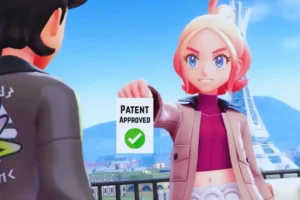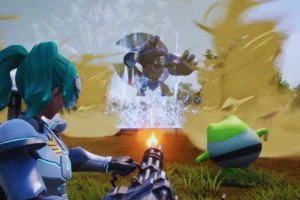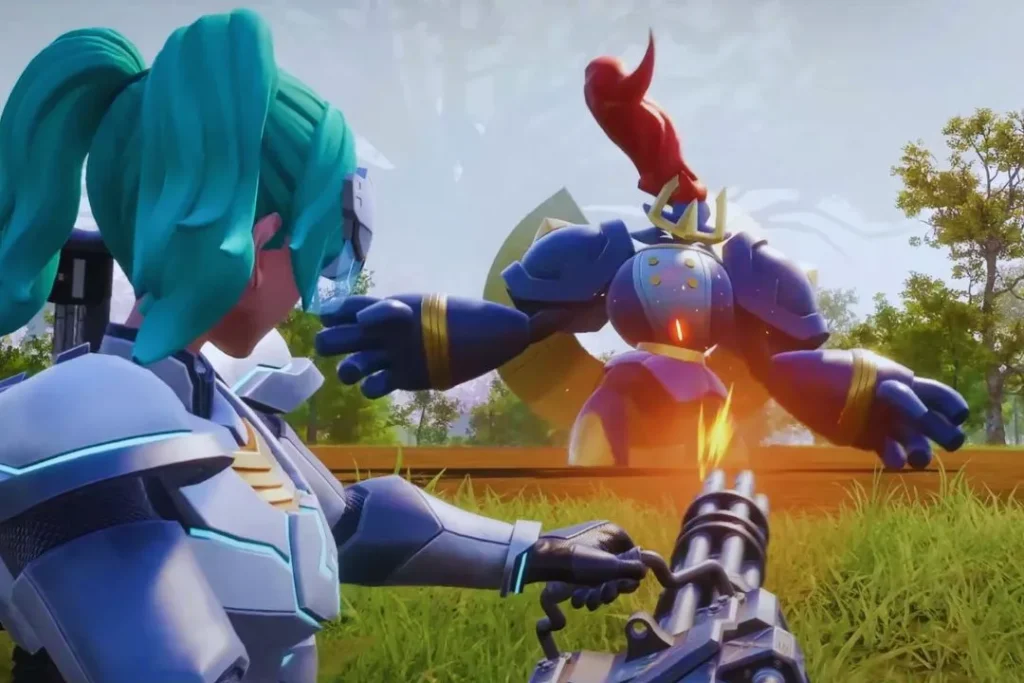Nintendo patents summoning has always been at the forefront of innovation in the gaming world. From introducing the D-pad to revolutionizing portable consoles and motion controls, the company has repeatedly reshaped how players interact with games. In 2025, Nintendo took another bold step by securing a new patent related to summoning mechanics in video games. This development has sparked widespread discussion among gamers, developers, and legal experts.
At its core, the patent describes a system where a player can summon a secondary character—or “sub-character”—onto the game field. Once summoned, the sub-character interacts with enemies in specific ways, creating structured gameplay modes. While it might sound like just another gameplay idea, the fact that Nintendo now legally holds this patent has raised questions about creativity, competition, and the future of monster-collecting games like Pokémon.
What is Nintendo Patents Summoning?
“Nintendo patents summoning” refers to US Patent No. 12,403,397, granted in September 2025 to Nintendo and The Pokémon Company. This patent defines a particular gameplay mechanic: a player moves their character through a virtual space, and at certain moments, they can input a command to summon a secondary character.
The summoned sub-character can then either:
- Immediately engage in battle if an enemy is already present.
- Move automatically until it encounters an enemy and initiates combat.
- Be directed by the player toward enemies to trigger battle in another mode.
This layered approach goes beyond a simple “summon creature” function. By patenting this mechanic, Nintendo aims to protect a unique style of character interaction that is closely tied to Pokémon’s iconic battle system.
Fixed Table – Key Patent Information
| Attribute | Information |
| Patent Number | US 12,403,397 |
| Filing Date | March 2023 |
| Grant Date | September 2025 |
| Owner | Nintendo & The Pokémon Company |
| Core Concept | Summoning sub-characters to battle enemies |
| Industry Impact | Monster-collecting, RPG, and action games |
How the Summoning Mechanic Works

To understand why this patent matters, let’s break down the mechanism step by step:
- The player character moves through a game field, much like how Pokémon trainers travel through different routes.
- The sub-character (summoned creature or ally) can be brought into the field through a specific input.
- If an enemy character is already in the same space, a battle begins immediately.
- If no enemy is nearby, the summoned character moves automatically until an encounter happens.
- Alternatively, the player can control the direction of the sub-character, guiding it toward enemies to initiate combat.
This structured approach provides different “battle initiation modes,” creating varied gameplay experiences. It also gives Nintendo legal grounds to argue that this system is unique and should not be freely replicated by competitors.
Why Nintendo Filed This Patent

Nintendo’s decision to file this patent wasn’t random—it was strategic. The gaming market has been buzzing with new monster-collecting titles, such as Palworld, Temtem, and long-standing competitors like Digimon. By securing the rights to this specific summoning mechanic, Nintendo is safeguarding Pokémon, one of its most valuable franchises.
The timing is crucial. In early 2025, Nintendo and The Pokémon Company began legal action against Palworld developer Pocketpair. Many observers believe that patents like this one strengthen Nintendo’s legal arsenal, making it harder for rivals to create games that resemble Pokémon’s core gameplay.
Gaming Community Reactions
The reaction to Nintendo’s patent summons has been mixed.
- Supporters argue that Nintendo is right to protect its intellectual property. Pokémon has been a cultural icon for decades, and safeguarding its mechanics ensures the brand remains unique.
- Critics, however, feel the patent is overly broad. Summoning mechanics have existed in RPGs for years, from Final Fantasy’s summons to indie games with companion systems. Critics worry this could discourage creativity and limit what smaller developers can create.
Social media platforms like Reddit and X (formerly Twitter) have been flooded with debates. Some fans fear that if patents like this become common, innovation in game design may be locked behind legal walls.
Past Examples of Nintendo Patents
Nintendo has a long history of patenting innovations. Some notable examples include:
- Motion controls used in the Wii, which reshaped casual gaming.
- Dual-screen gameplay of the Nintendo DS, which inspired a generation of handhelds.
- Amiibo technology links physical toys to digital content.
Some of these patents were hugely successful, while others stirred controversy. The new summoning patent falls into the latter category, as it overlaps with mechanics that gamers feel should be part of the common creative pool.
Impact on Future Games
For Pokémon, the patent may allow more sophisticated battle systems. Imagine being able to summon a Pokémon that automatically seeks out wild battles while you focus on exploration. Or summoning multiple creatures with distinct behaviors depending on where they appear on the map.
Beyond Pokémon, Nintendo might experiment with this mechanic in other franchises. Could a Zelda spin-off let Link summon spirits in structured battle modes? Could a Mario RPG incorporate ally-summoning features tied to this patent?
Nintendo vs. Palworld: The Legal Angle
Nintendo’s lawsuit against Palworld has placed this patent in the spotlight. Palworld allows players to summon creatures—called “Pals”—to fight, work, or travel. The similarities to Pokémon were already controversial, and now this patent gives Nintendo more ammunition in court.
Legal experts suggest that if Nintendo proves Palworld’s mechanics overlap with the patent claims, Pocketpair could face serious consequences. However, others argue that the patent may not hold up if challenged, since summoning mechanics existed long before Pokémon.
Criticism of Broad Gameplay Patents
The main criticism of Nintendo patents summoning is that it feels too broad. Summoning has been part of gaming for decades—Final Fantasy, Shin Megami Tensei, and even early RPGs had companion or summon mechanics.
If Nintendo’s patent is interpreted too widely, many games could be at risk of infringement claims. This raises concerns about creativity in the industry. Should companies be allowed to patent mechanics that appear to be evolutionary rather than revolutionary?
IP lawyers warn that such patents may discourage indie developers from experimenting with familiar systems, fearing legal battles they cannot afford.
The Bigger Picture- Gaming Industry Implications

Nintendo isn’t the only company patenting gameplay. Warner Bros. famously patented the Nemesis System from Middle-earth: Shadow of Mordor, preventing other studios from using similar AI-driven enemy systems.
As more publishers pursue such protections, the gaming industry faces a crossroads. Patents can secure innovation, but they can also create barriers. For small studios, this means navigating a complex legal landscape where even basic mechanics might be off-limits.
The summoning patent highlights this trend, showing how valuable gameplay systems have become in an industry worth hundreds of billions of dollars.
FAQs – Nintendo Patents Summoning
Q1. What does Nintendo’s patent summons mean in simple terms?
Ans: It refers to a patented mechanic where players can summon secondary characters that interact with enemies under specific rules.
Q2. Is this patent related only to Pokémon?
Ans: While Pokémon is the most obvious connection, the patent could be applied to other Nintendo RPGs in the future.
Q3. Can other games still use summoning mechanics?
Ans: Yes, but they must differ enough from Nintendo’s patent claims to avoid legal conflict.
Q4. Why is this patent controversial?
Ans: Many feel it covers ideas that already existed, which could stifle creativity and limit indie developers.
Q5. How long will this patent last?
Ans: Typically, patents in the U.S. last 20 years from the filing date, so this one could extend until 2043.
Q6. Will this affect Palworld?
Ans: It might. Since Palworld has similar mechanics, it could become a central issue in Nintendo’s lawsuit.
Q7. What does this mean for gamers?
Ans: Gamers may see fresh twists in Pokémon, but fewer indie titles are experimenting with similar mechanics.
Final thoughts
Nintendo patents summoning is more than just a technical filing—it’s a statement about where the gaming industry is headed. On one hand, it protects one of Nintendo’s most valuable assets, ensuring Pokémon’s uniqueness. On the other hand, it raises tough questions about creativity, ownership, and fairness in game design.
As lawsuits unfold and debates continue, one thing is clear: this patent will influence not just Nintendo’s future, but how the entire industry approaches innovation. For gamers, it may mean new battle systems, but for developers, it’s a reminder that even gameplay ideas can become legal territory.
